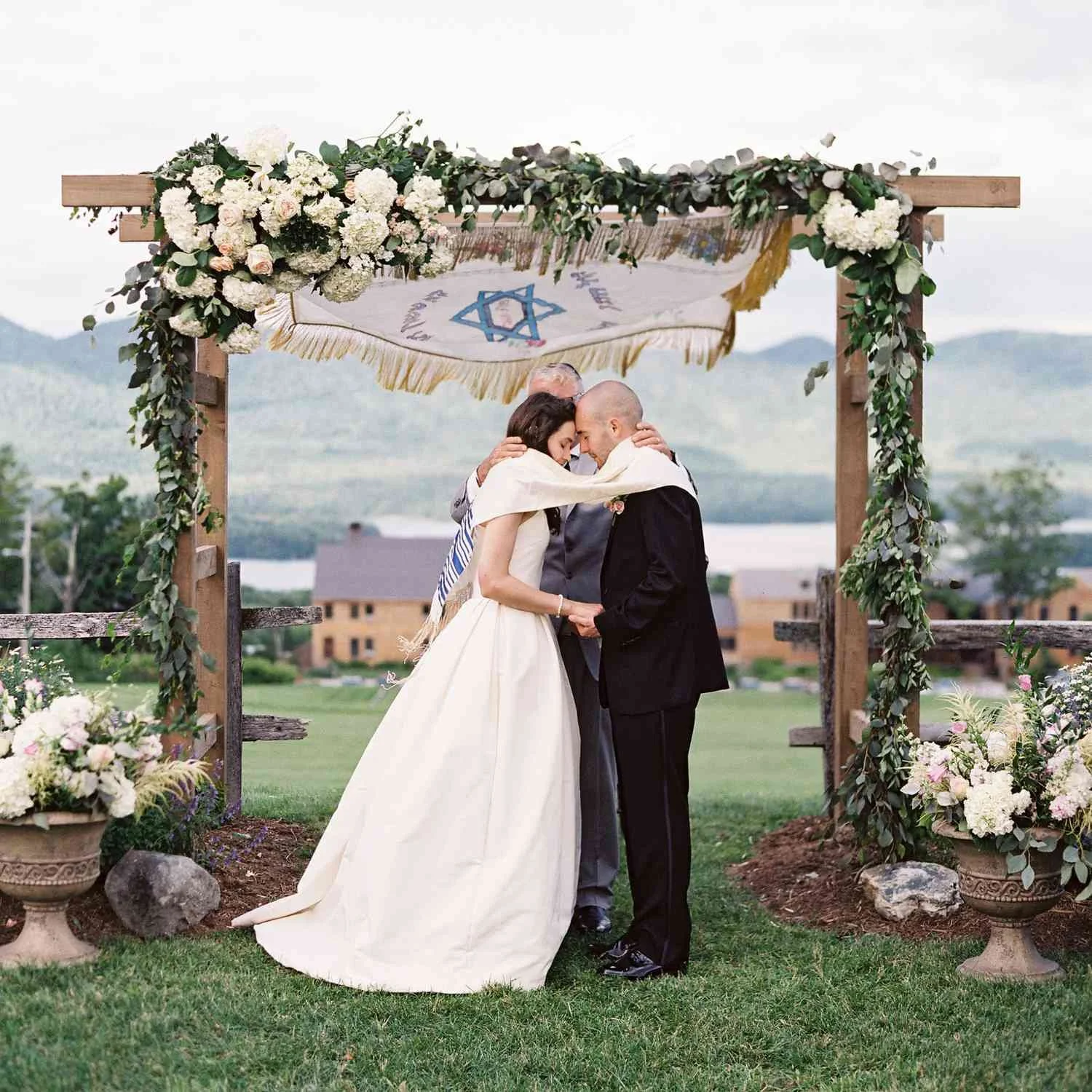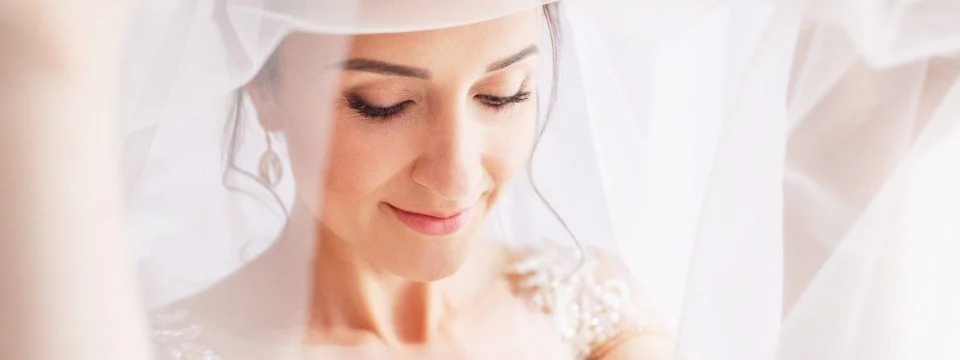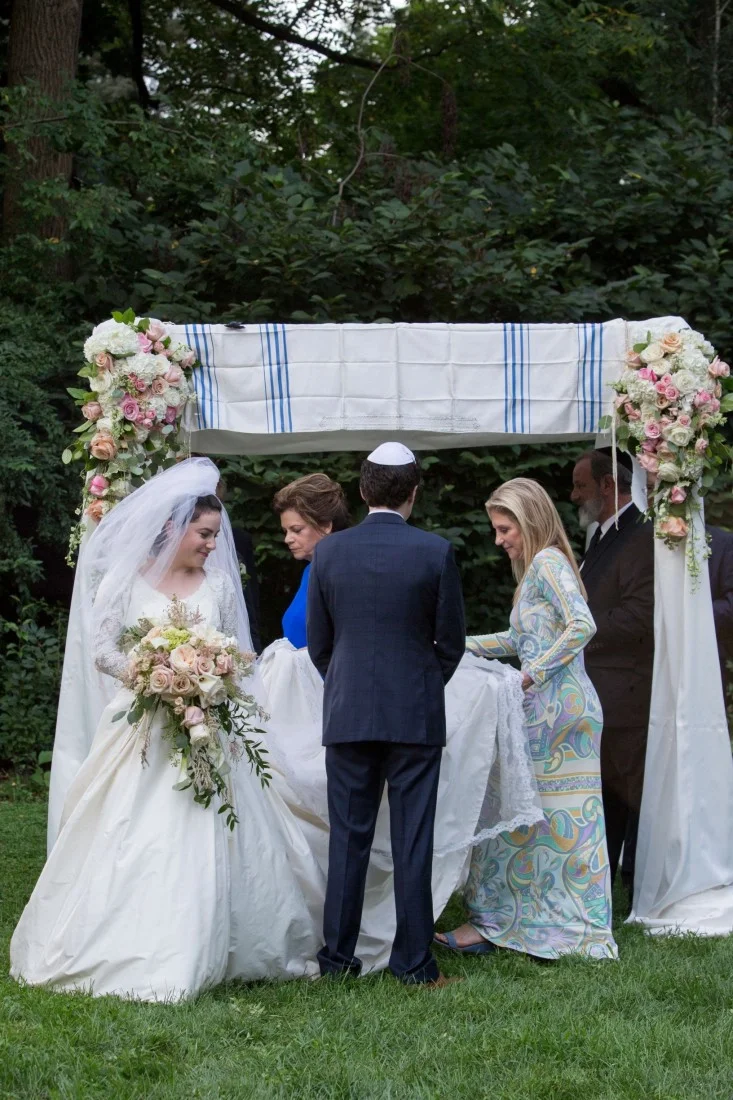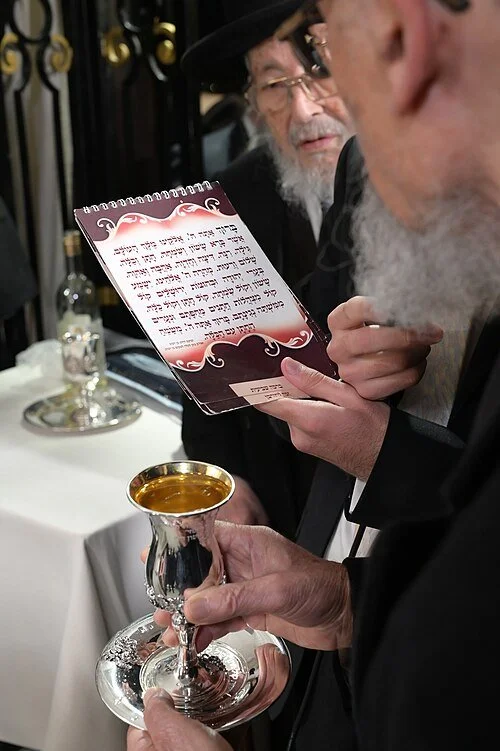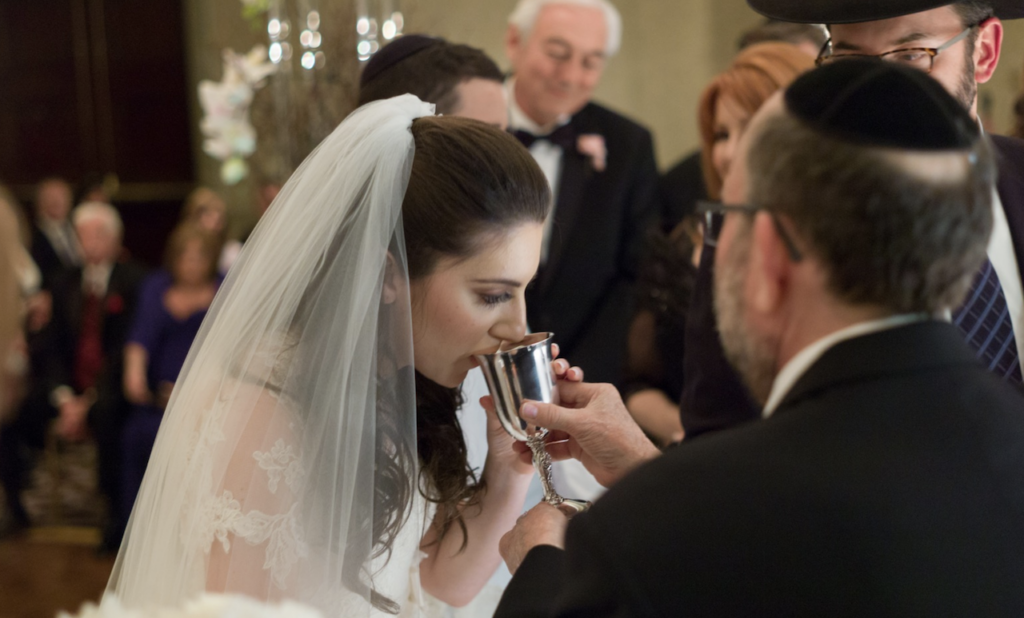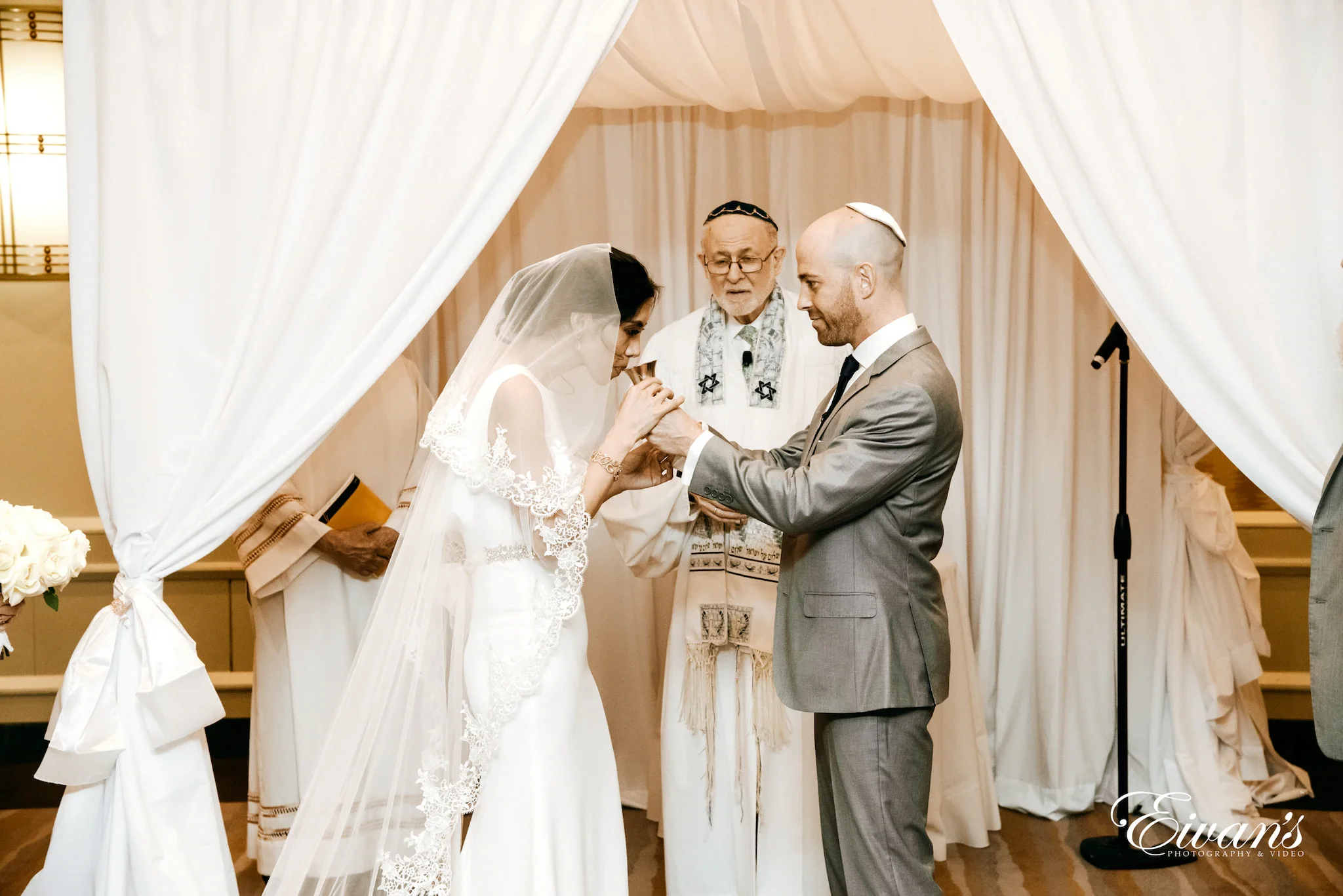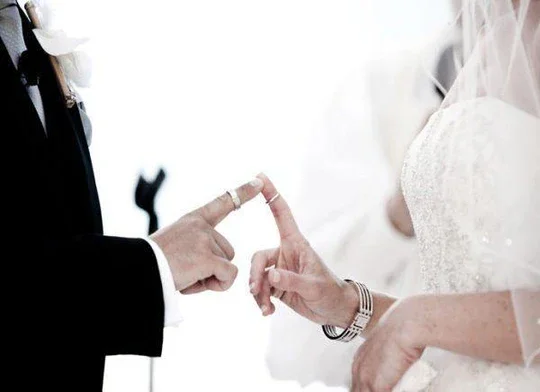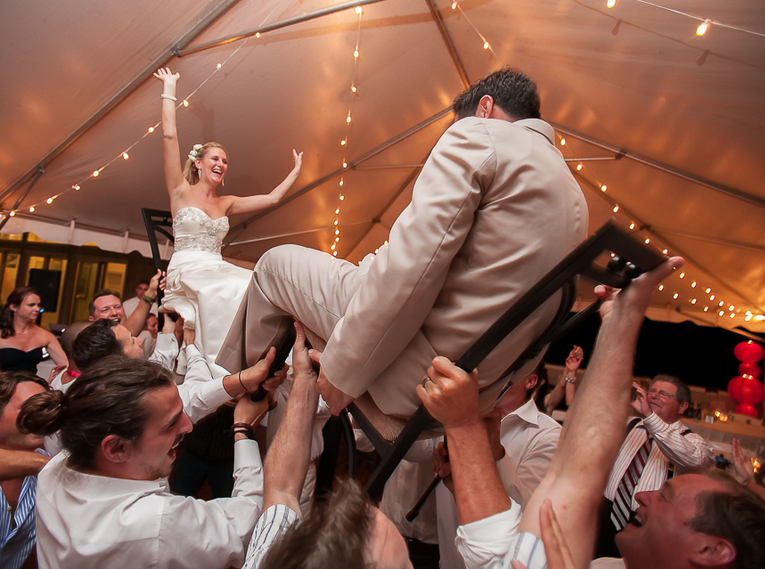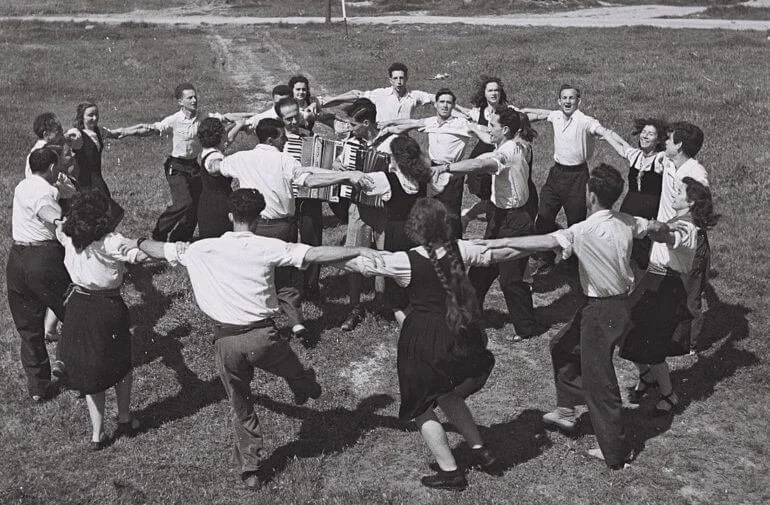The Ceremony
There are some Jewish wedding traditions of which some may sound familiar, but knowing what to expect (and being versed in the meaning behind what you're watching) will make you even more prepared to celebrate.
"A Jewish wedding ceremony is a little bit fluid, but there is a basic outline,"
So here is an introductory to what is going to happen and the meaning behind it:
The Walk to the Chuppah
A Chuppah is like an open tent, it has four post/sticks and is covered, i.e. has a roof of cloth, often a prayer shawl, tallit, to symbolize the new home the bride and groom are building together. The four posts are often held upright by friends of the couple.
In the Jewish tradition, both of the groom’s parents walk him down the aisle to the chuppah. Then the bride and her parents follow. Traditionally, the parents stand under the chuppah during the ceremony, alongside the bride and groom.
The Veil
The groom approaches the bride for the veiling. He looks at her and then veils her face. This signifies that his love for her is for her inner beauty. It also is a tradition stemming from the Bible wherein Jacob one of our ancestral fathers was tricked into marrying Lea, the sister of Rachel, the women he loved, because the sister was veiled. When the groom does the veiling himself, such trickery can never happen.
Circling the groom
In the Central European Jewish tradition, the bride traditionally circles around her groom seven times under the chuppah. Some people believe this is to remember that G-d created the world in seven days and now the bride is symbolically creating their new world, a new family circle.
Sheva B'rachot: Seven Blessings
The seven blessings called the Sheva B'rachot come from ancient teachings. The blessings focus on joy, celebration, and the power of love. They begin with the blessing over a cup of wine, then progress to more grand and celebratory statements, ending with a blessing of joy, peace, companionship, and the opportunity for the bride and groom to rejoice together.
Wine
In Judaism wine has a central place, both religiously and socially. Wine is a symbol for reverence, but also of joy and celebration. After the blessing of the wine, the bride and groom will drink from the cup which symbolizes the holiness of the marriage.
The Ketubah or giving vows
The ketubah is a symbolic Jewish marriage contract that outlines the groom's responsibilities to his bride. It dictates the conditions he will provide in the marriage, the bride's protections and rights. The Ketubahs is part of Jewish civil law. Many couples who choose to have a ceremony like Katta and Anton use the opportunity instead to give each other vows
Wedding Ritual
The ceremony celebrates Katarina and Anton's marriage, joining hands and committing to a life of mutual respect, responsibility, peace, joy, and harmony.
Ring Exchange
The ring symbolizes eternity as it is a perfect circle with no beginning and no end.
The couple place the rings on each other's index fingers, and are now bound to each other. The index finger is also the most important finger in Judaism as you use the index finger to follow along when reading from the Torah, the five books of Moses.
Breaking of the Glass
As the ceremony comes to an end, the groom is invited to step on a glass inside a cloth bag to shatter it. The breaking of the glass holds multiple meanings. Some say it represents the destruction of the Temple in Jerusalem. Others say it demonstrates that marriage holds sorrow as well as joy and is a representation of the commitment to stand by one another even in hard times.
Mazel Tov!
Shouting "Mazel tov!" is one of the most well-known Jewish wedding rituals. Once the ceremony is over and the glass is broken, you will hear guests cheer "Mazel tov!" Mazel tov has a similar meaning "good luck" or "congratulations." The direct translation is actually closer to wishing the best for the future, a great destiny, or a pronouncement that the person or people have just experienced great fortune. There's no better time to say "mazel tov" than at a wedding!
Hora dance
The celebratory dance at the reception is called the hora where guests dance in a circle. The bride and groom are seated on chairs and lifted into the air while holding onto a handkerchief or cloth napkin. This practice is a symbol of joy and celebration, signifying the couple's spiritual elevation and connection to the community.
There are many examples of youtube like here.
